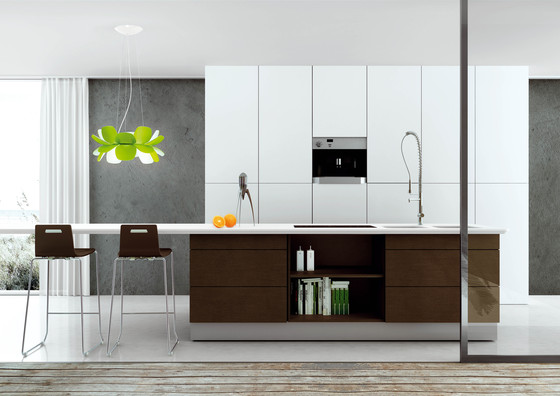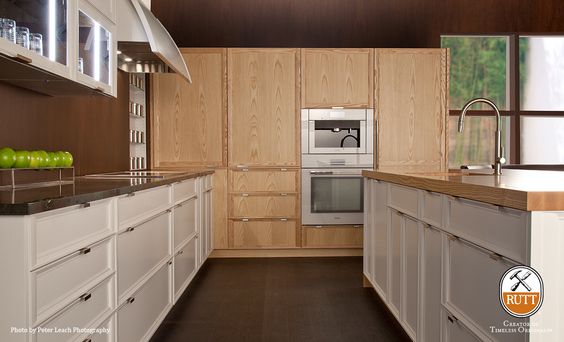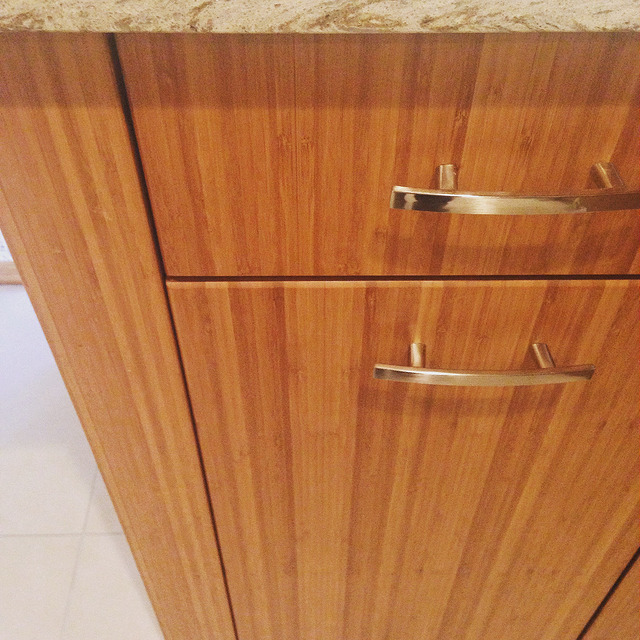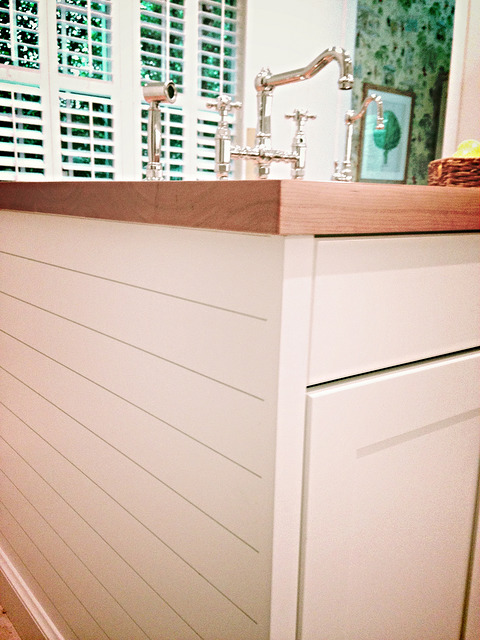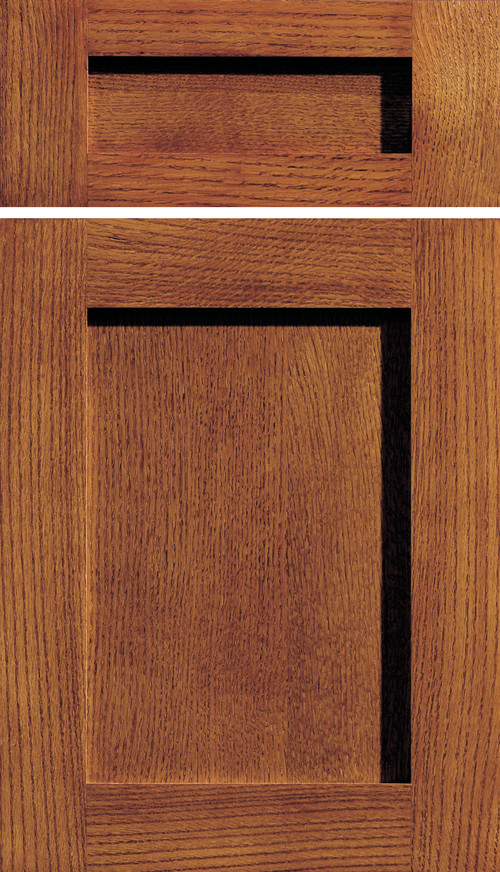Julia Child was a pioneer in the world of haute cuisine at a time when celebrity "chefdom" was a decidedly manly occupation. She didn’t care. The kitchen was her natural habitat and she had her own ways of making it work for her whether she was whipping up a soufflé or flaming a creme brûlée. 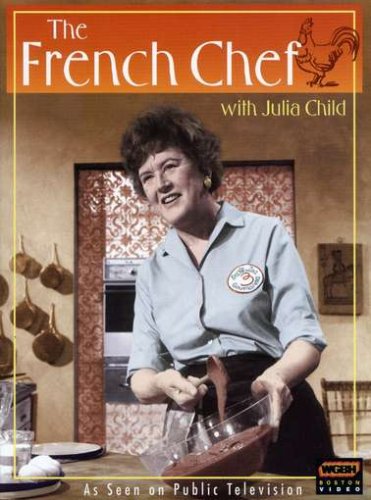 Child is credited with bringing French cuisine to America in the 1960s and was host of The French Chef on PBS which aired from 1963-1973. Interestingly, she did not learn to cook until she met her husband Paul Child, an American diplomat with a refined palate. Julia also worked for the government during WWII as a research assistant in the Secret Intelligence division of the OSS (Office of Strategic Services). It was in this capacity that she created her first recipe which was for shark repellent! It worked and is still in use today. After the war the couple settled in Paris where Paul worked for the US Foreign Service and Julia attended the renowned Le Cordon Bleu cooking school. She had fallen in love with French cuisine. Julia stood 6’2”, never had any children and left this world in 2004, two days shy of her 92nd birthday. She was quoted as saying, “with enough butter, anything is good”. Apparently her health was none the worse for it.
Child is credited with bringing French cuisine to America in the 1960s and was host of The French Chef on PBS which aired from 1963-1973. Interestingly, she did not learn to cook until she met her husband Paul Child, an American diplomat with a refined palate. Julia also worked for the government during WWII as a research assistant in the Secret Intelligence division of the OSS (Office of Strategic Services). It was in this capacity that she created her first recipe which was for shark repellent! It worked and is still in use today. After the war the couple settled in Paris where Paul worked for the US Foreign Service and Julia attended the renowned Le Cordon Bleu cooking school. She had fallen in love with French cuisine. Julia stood 6’2”, never had any children and left this world in 2004, two days shy of her 92nd birthday. She was quoted as saying, “with enough butter, anything is good”. Apparently her health was none the worse for it. 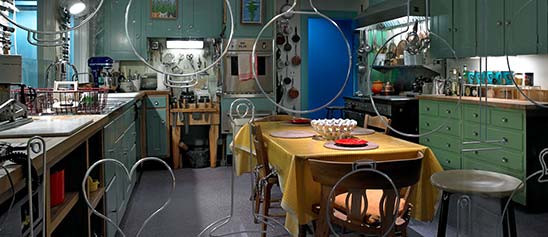 Julia’s real life kitchen was donated, moved and reassembled in the Smithsonian's National Museum of American History in 2001. The layout was devised by Julia and her husband and customized to her cooking needs, including higher counter tops to accommodate her height. Pots and cooking utensils are all placed exactly as they were in her home. Today Julia would be utterly amazed at the advancements in appliances, materials and new storage options. Although her kitchen goes back 50 years she had ideas and practices that are very relevant today. Here is what I think today’s kitchen would look like through the eyes of The French Chef.
Julia’s real life kitchen was donated, moved and reassembled in the Smithsonian's National Museum of American History in 2001. The layout was devised by Julia and her husband and customized to her cooking needs, including higher counter tops to accommodate her height. Pots and cooking utensils are all placed exactly as they were in her home. Today Julia would be utterly amazed at the advancements in appliances, materials and new storage options. Although her kitchen goes back 50 years she had ideas and practices that are very relevant today. Here is what I think today’s kitchen would look like through the eyes of The French Chef. 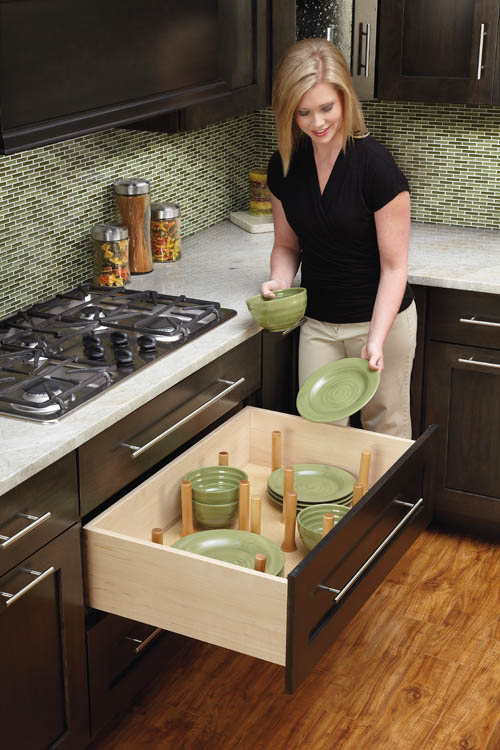 Organization and Easy AccessJulia was known for her handy and efficient peg board system. Companies like Rev-A-Shelf have taken this concept and expanded it so that it doesn’t have to be on the wall. Moving pegs allow these inserts to be customized. This is especially handy for dish storage in new kitchens that feature fewer upper cabinets. A "Julia kitchen" includes a place for everything and everything in it’s place.
Organization and Easy AccessJulia was known for her handy and efficient peg board system. Companies like Rev-A-Shelf have taken this concept and expanded it so that it doesn’t have to be on the wall. Moving pegs allow these inserts to be customized. This is especially handy for dish storage in new kitchens that feature fewer upper cabinets. A "Julia kitchen" includes a place for everything and everything in it’s place. 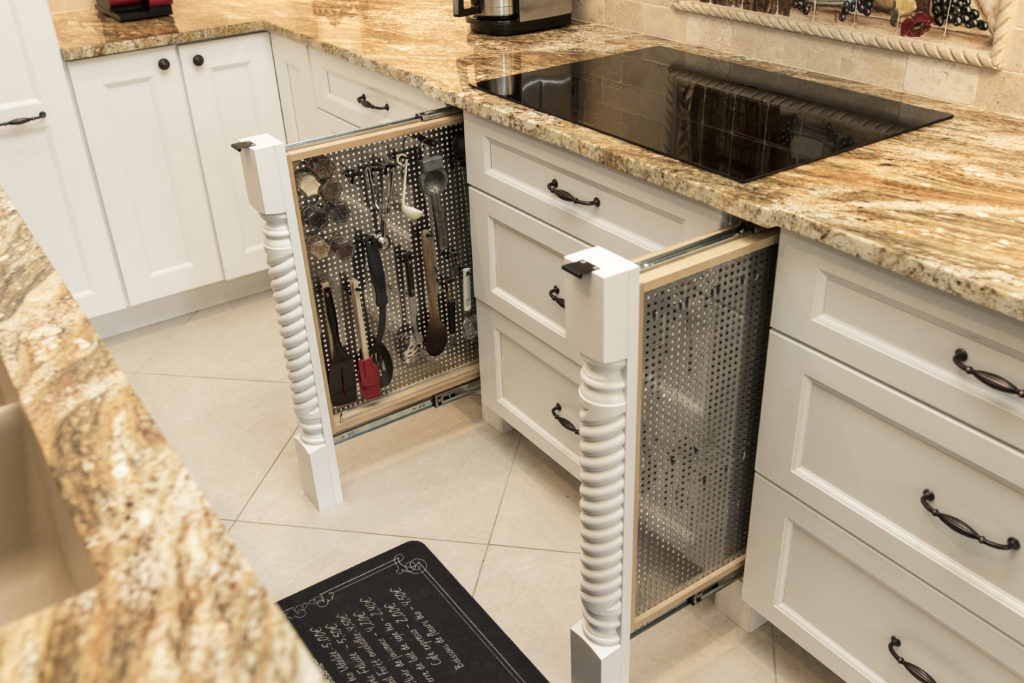 To Make the Cut You Must Have Great KnivesA self-proclaimed knife freak, Julia collected them all her life and never met one that was sharp enough for her! Check out this delightful anecdote from the New England Historical Society and you'll see what I mean. I agree that there is nothing more frustrating in the kitchen than dull knife. The winner in my book is J.A. Henckels International 8" Classic Chef's Knife in terms of quality and value for the money.
To Make the Cut You Must Have Great KnivesA self-proclaimed knife freak, Julia collected them all her life and never met one that was sharp enough for her! Check out this delightful anecdote from the New England Historical Society and you'll see what I mean. I agree that there is nothing more frustrating in the kitchen than dull knife. The winner in my book is J.A. Henckels International 8" Classic Chef's Knife in terms of quality and value for the money.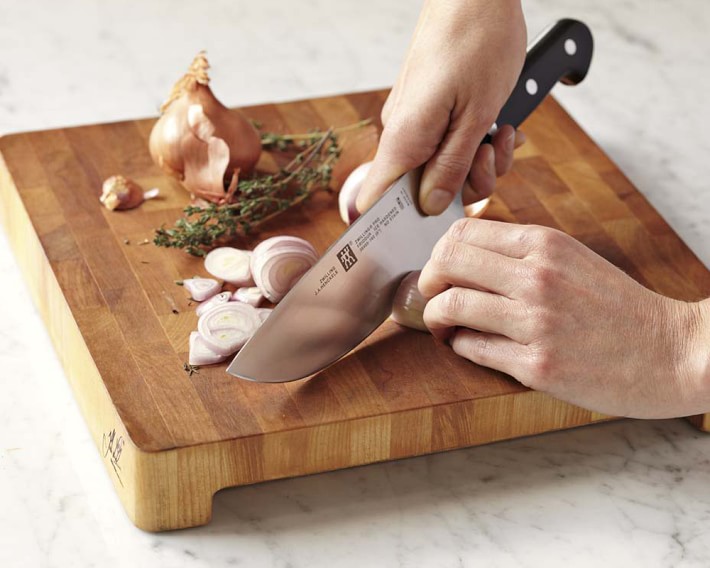 Having a great knife is half of the equation, now we have to store them. Julia preferred to house them on a magnet attached to the wall. Today she would love this railing system by Clever Storage that allows you to take advantage of the space between upper and lower cabinets. It's safe, attractive and accessible. Win!
Having a great knife is half of the equation, now we have to store them. Julia preferred to house them on a magnet attached to the wall. Today she would love this railing system by Clever Storage that allows you to take advantage of the space between upper and lower cabinets. It's safe, attractive and accessible. Win! 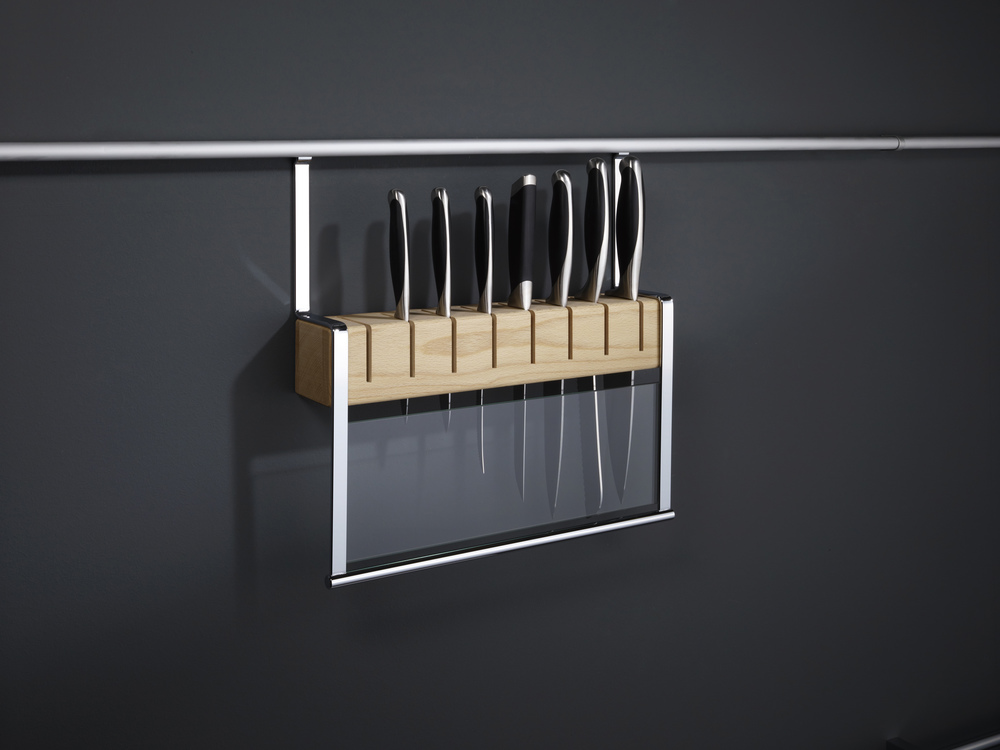 The Mother Ship of RangesJulia used a 1950s six burner used commercial gas range by Garland. This company is still in business so you can get a modern version today but I’m betting Julia would fall for the TriFuel range by Tecnogas Superiore for its state of the art versatility. In fact, it was just announced Product Innovator Award winner for 2016 by Kitchen & Bath Business Magazine. It features dual gas burners plus four induction zones and an electric griddle. Below are dual gas ovens equipped with two convection fans and a broiler.
The Mother Ship of RangesJulia used a 1950s six burner used commercial gas range by Garland. This company is still in business so you can get a modern version today but I’m betting Julia would fall for the TriFuel range by Tecnogas Superiore for its state of the art versatility. In fact, it was just announced Product Innovator Award winner for 2016 by Kitchen & Bath Business Magazine. It features dual gas burners plus four induction zones and an electric griddle. Below are dual gas ovens equipped with two convection fans and a broiler.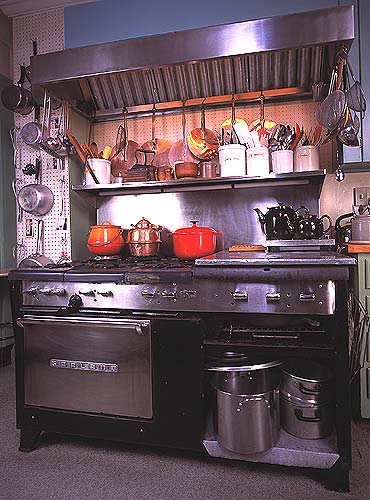
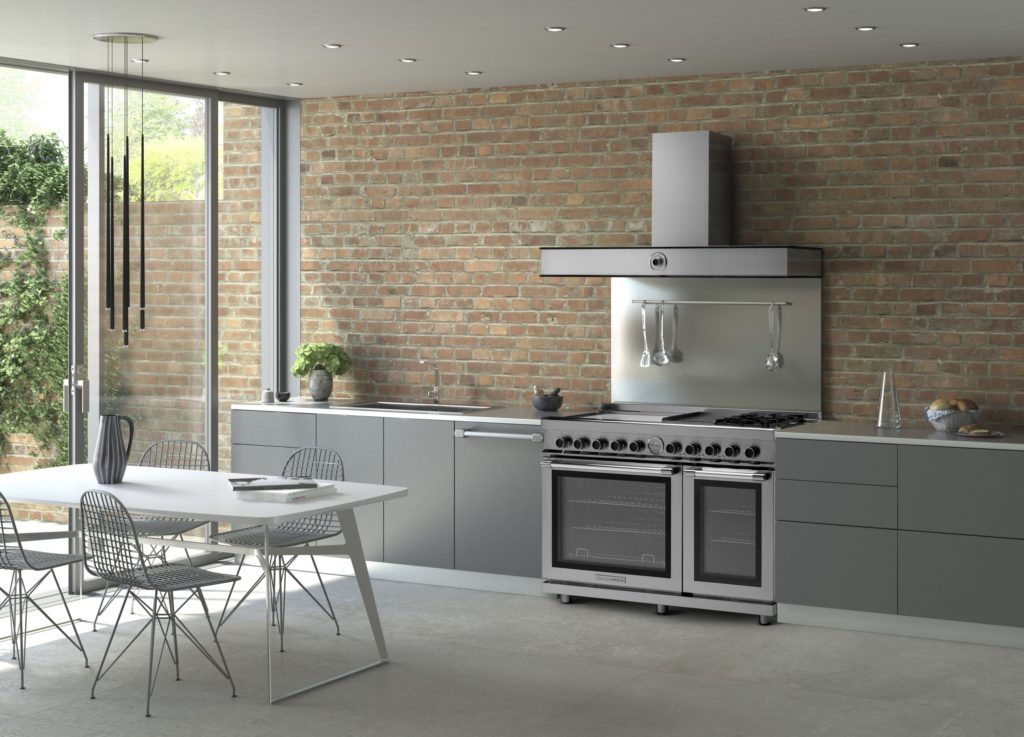 The Beauty of Butcher BlockThe French Chef was fond of her extra high maple counter tops for food preparation. You may not want an entire kitchen with wood tops but, if you can, it's great to have a section of it for food prep. Wood butcher block counters are a natural eco-friendly choice, absorb noise, are gentle on dishes and can be refinished. In addition to this, wood has inherent antibacterial qualities and can add a beautiful warmth to your kitchen. If you're going to use your counter for food prep it should have an oiled finish which does need to be maintained.
The Beauty of Butcher BlockThe French Chef was fond of her extra high maple counter tops for food preparation. You may not want an entire kitchen with wood tops but, if you can, it's great to have a section of it for food prep. Wood butcher block counters are a natural eco-friendly choice, absorb noise, are gentle on dishes and can be refinished. In addition to this, wood has inherent antibacterial qualities and can add a beautiful warmth to your kitchen. If you're going to use your counter for food prep it should have an oiled finish which does need to be maintained. 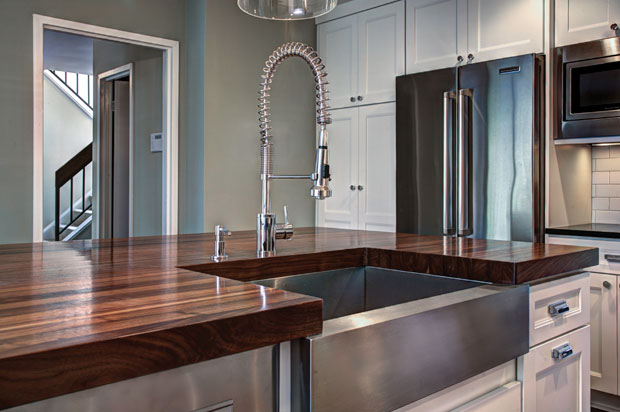 Last but not least never enter the kitchen without a sense of humor and adventure Child was never without it! She said, “in cooking you’ve got to have a what-the-hell attitude!”-If you'd like to experience cooking like a French chef you can stay at what was once Julia and Paul's part-time residence in Provence, France courtesy of Airbnb.
Last but not least never enter the kitchen without a sense of humor and adventure Child was never without it! She said, “in cooking you’ve got to have a what-the-hell attitude!”-If you'd like to experience cooking like a French chef you can stay at what was once Julia and Paul's part-time residence in Provence, France courtesy of Airbnb.
Kitchen Design 2017- What's Next?
Fashion is a fickle phenomena. What's in today quickly morphs into the the next new sensation. It doesn't matter if it's clothes or cabinets. Granted, interior trends are slower to transition but it works the same way.
Lately I've been giving a lot of thought to the huge love affair with contemporary design. The pendulum is deep into the greys, floating shelves, waterfall counters, clean lines, simplicity, slab style cabinet doors or wide stile and rail shaker fronts. Don't get me wrong, I love it and I think it's going to be many years before these looks become "outdated." If you've followed my advice in the past, you know I believe in designing to the structure. If you follow the styling and architecture of your home when designing your cabinetry your kitchen will never be dated. Then, of course, you have to have what you LOVE! That is numero uno.
But what's next? As sure as the sun rises the pendulum will eventually swing the other way and when it does it's going to be in a completely new direction. I just can't see us going back to the traditional looks of the past with glazes, heavy molding etc. Will the pendulum swing back to Traditional territory and what will the new Traditional look like? What's next on the horizon? “We are all familiar with consumers’ constant desire to see something new, yet they still want, in many cases, to have somewhat of a familiar comfort level,” said Leatrice (Lee) Eiseman – executive director of the Pantone Color Institute. I think she's right. We want fresh and new but we want to feel a connection to qualities we've enjoyed in the past. This kitchen by Rutt HandCrafted Cabinetry has got me thinking about what a "new Traditional" would look like.
Clean lines continue but now soft elegant detail makes an appearance
Darryl Minch, manufacturer's rep with the Baronet Group International, Inc., says "I'm seeing less extreme contrasts of color in the kitchen, think softer palettes , white and off -whites used in the same space". My own prediction is that we will see a big resurgence of natural wood finishes. I see hints of this all over. For quite a while white painted finishes and dark espresso stains have ruled. Neither shows the beauty of wood grain. Textured laminates round out the top choices at the moment but how about the real deal?
Take your paneling in a different direction. If you have an island in your plan, chances are you're going to need some paneling to tie it all together. Take the traditional vertical beadboard and turn it for a "new traditional" effect. I'm loving this option for a coastal look as it's reminiscent of ship lap. I started to use this design detail in my projects and now I'm seeing it more and more.
If you're a design lover or savvy pro I'd love to hear your predictions for kitchen and bath design 2017.
The Dope on Oak
Where have the days since Thanksgiving gone! Time is certainly flying by. This is traditionally our “quiet” time of year as no one want “remodel destruction” around the holidays. That said, some are looking ahead and beginning the planning process for the new year. One huge consideration that has to be made is what type of finish to choose for your cabinetry. 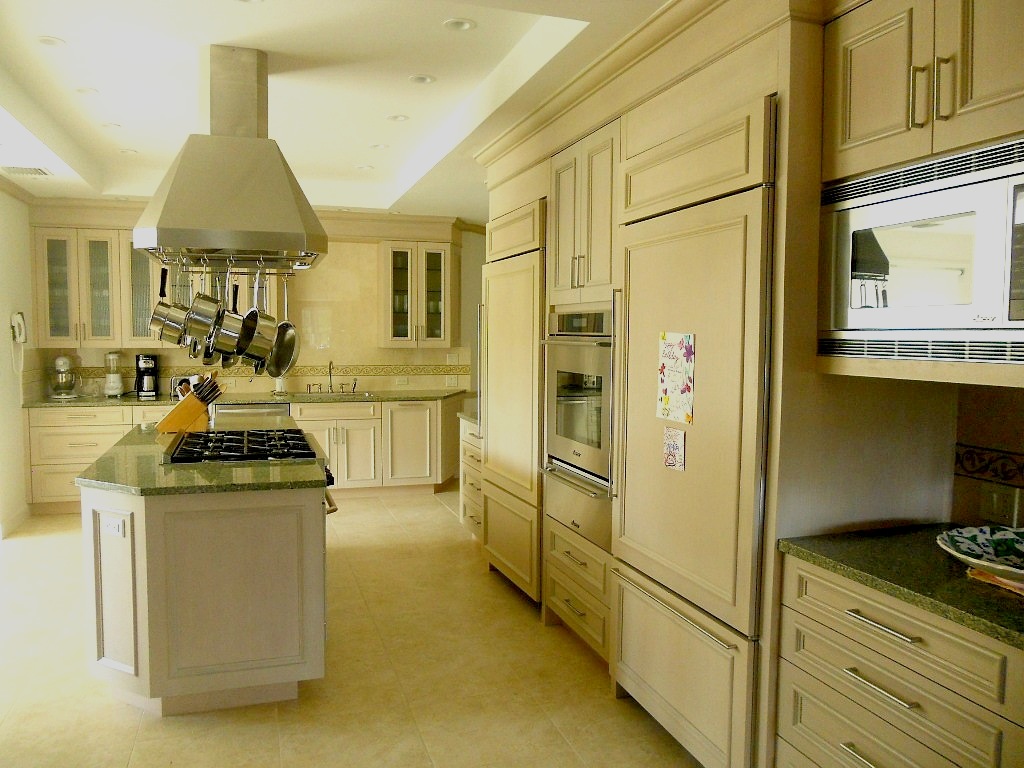 While “white” is the go-to choice for many nowadays, I do have certain designers looking for something special in the finish department.
While “white” is the go-to choice for many nowadays, I do have certain designers looking for something special in the finish department.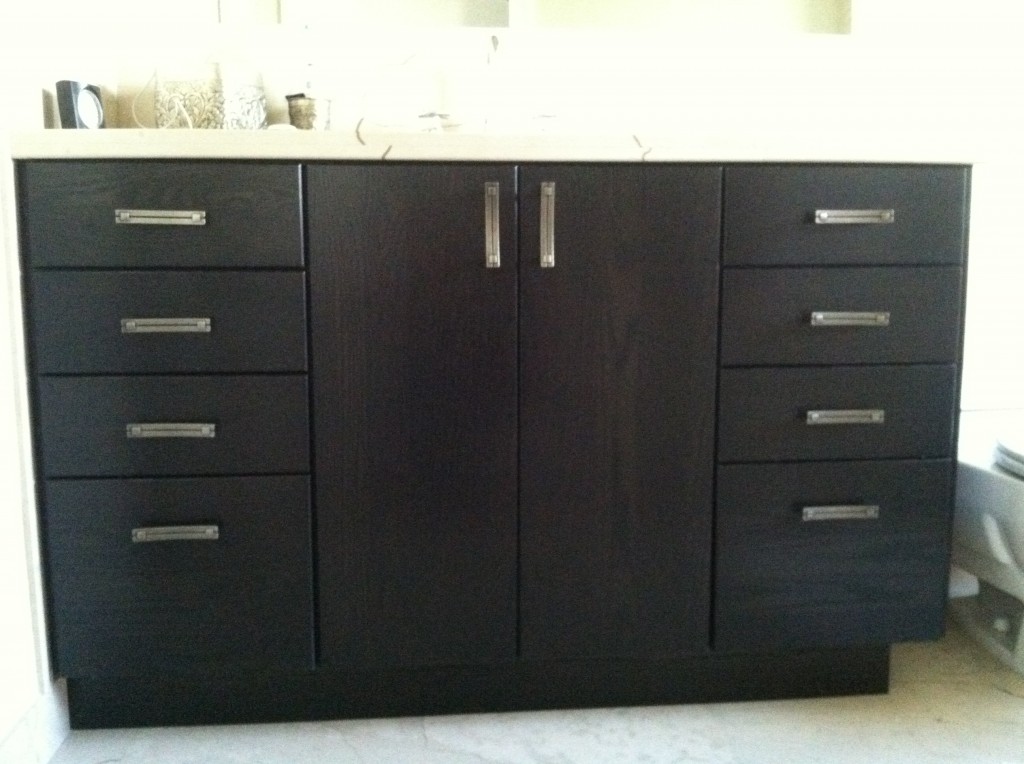 It used to be that oak was a bad word in Florida but grainy woods have made a comeback. I think it all started when someone figured out that you could achieve an interesting textural look by combining oak with a dark coffee, or espresso finish. The result actually looks a lot like the popular (and pricier) Wenge wood! There are two main types of oak to choose from, white oak and red oak. Red oak is what you’ll typically see here in the US. White oak is usually a custom option. Oak in any color is a sturdy choice and is classified as a hard wood, unlike pine for example. You can get knotty oak, sometimes referred to as character oak or you can get a clear oak with minimal or no knots.
It used to be that oak was a bad word in Florida but grainy woods have made a comeback. I think it all started when someone figured out that you could achieve an interesting textural look by combining oak with a dark coffee, or espresso finish. The result actually looks a lot like the popular (and pricier) Wenge wood! There are two main types of oak to choose from, white oak and red oak. Red oak is what you’ll typically see here in the US. White oak is usually a custom option. Oak in any color is a sturdy choice and is classified as a hard wood, unlike pine for example. You can get knotty oak, sometimes referred to as character oak or you can get a clear oak with minimal or no knots. The door below is an example of quarter sawn red oak and is by Dura Supreme as shown on Houzz. This is typical of what you would get if you were looking for a Craftsman style door for your kitchen. The hallmark of Arts and Crafts design is an emphasis on the natural quality of the material without excess ornamentation.
The door below is an example of quarter sawn red oak and is by Dura Supreme as shown on Houzz. This is typical of what you would get if you were looking for a Craftsman style door for your kitchen. The hallmark of Arts and Crafts design is an emphasis on the natural quality of the material without excess ornamentation.
The other request I get is for quarter sawn oak. This refers to how the planks are cut from the log. It is a more expensive option and it incurs a lot of waste in the process. The benefit is even straighter wood graining and increased stability. Sometimes the terms "rift cut" and quarter sawn are used interchangeably but rift cutting is actually even more expensive and involves some complicated cutting. You can read about the differences here.  Another term that’s starting to come up is “cerused oak” which is really interesting. Basically the prominent oak grain is filled with white for an interesting textural effect. The British refer to this as “liming, or limed oak”. Pair this with all the popular shades of gray and you have a really updated version of a look that was also in vogue in the 1950s. (Yes, Mom, your china cabinet from the fifties is cerused oak) I found this great article if you want to know more. So there you have it. If you’re looking for cabinets with interesting natural texture, oak can be a great choice! Want to know more about how to specify the right cabinets for you or your clients? Drop me a line!
Another term that’s starting to come up is “cerused oak” which is really interesting. Basically the prominent oak grain is filled with white for an interesting textural effect. The British refer to this as “liming, or limed oak”. Pair this with all the popular shades of gray and you have a really updated version of a look that was also in vogue in the 1950s. (Yes, Mom, your china cabinet from the fifties is cerused oak) I found this great article if you want to know more. So there you have it. If you’re looking for cabinets with interesting natural texture, oak can be a great choice! Want to know more about how to specify the right cabinets for you or your clients? Drop me a line!
Five Kitchen Myth Busters!
It’s recently occurred to me that many of my clients come to me with certain beliefs that aren’t actually true, or perhaps are only partially correct. We’ve put our heads together here at Brendan Donovan Furniture & Cabinet Co. to set the record straight.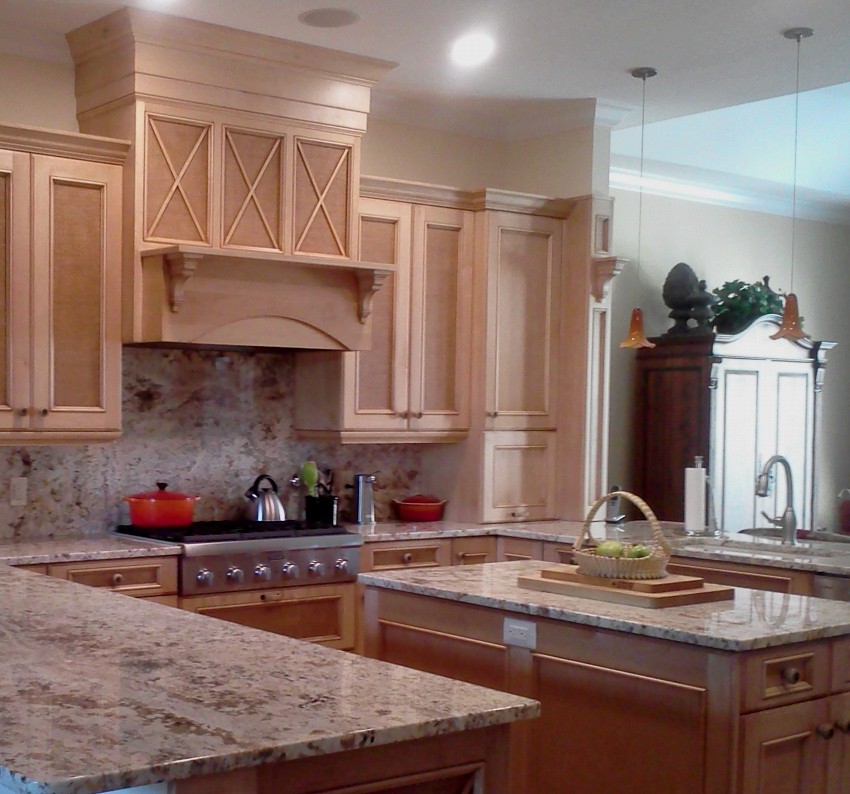
1) MANUFACTURED CABINETS ARE ALWAYS CHEAPER THAN CUSTOMAgain this is frequently true but here’s the thing to consider, manufactured cabinets are made on an assembly line that is set up for speed and efficiency. Once you specify a custom size or detail you slow down and complicate the whole process. Companies charge more for that, sometimes a lot more, and that is only if they are able to accommodate what you want. So the rule of thumb is, the more custom your needs, the more cost effective custom cabinets become. The kitchen above had so much custom sizing and detail it was actually a better deal for the homeowner to have us make it in the shop. A custom cabinet maker should not nickel and dime you for small tweaks and if a painted finish is your choice you can pretty much pick whatever you like with no custom color charge. 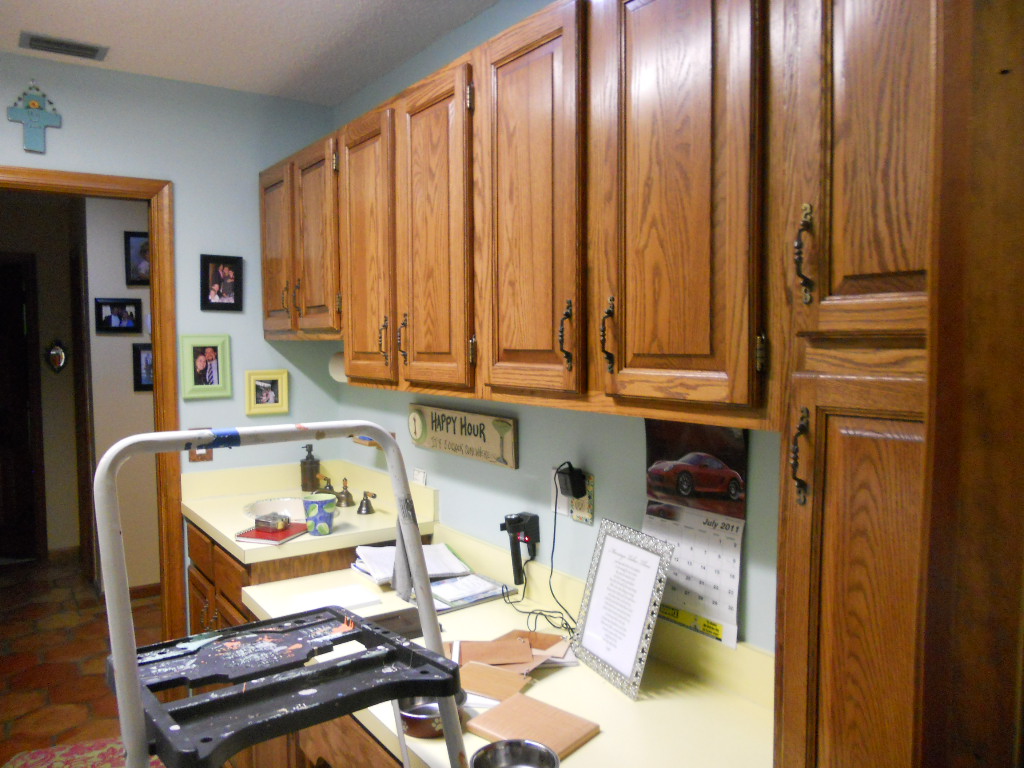 2) REFACING IS A QUICK FIX THAT COSTS LESS THAN REPLACING YOUR EXISTING CABINETSThis may not necessarily be true! The question I always ask is, are you replacing your counter tops too? If you are, I’m willing to bet you can replace your cabinets for very close to the same price it would cost you to reface them. In a reface you typically would get new cabinet doors with hinges and drawer fronts. The drawers themselves do not get replaced and you will remain with the exact same layout you started with. Another thing to consider is whether your cabinets currently have frames around them or do the doors cover the entire cabinet? If you’ve got frames, things get a little more complex and labor intensive. Bottom line is there are so many decent all wood cabinets available today you may be able to score a better plan with new everything for close to the same price. All things considered, a reface for the laundry room above (before) and below (after) ended up being slightly cheaper because they would have needed custom sizing to replace.
2) REFACING IS A QUICK FIX THAT COSTS LESS THAN REPLACING YOUR EXISTING CABINETSThis may not necessarily be true! The question I always ask is, are you replacing your counter tops too? If you are, I’m willing to bet you can replace your cabinets for very close to the same price it would cost you to reface them. In a reface you typically would get new cabinet doors with hinges and drawer fronts. The drawers themselves do not get replaced and you will remain with the exact same layout you started with. Another thing to consider is whether your cabinets currently have frames around them or do the doors cover the entire cabinet? If you’ve got frames, things get a little more complex and labor intensive. Bottom line is there are so many decent all wood cabinets available today you may be able to score a better plan with new everything for close to the same price. All things considered, a reface for the laundry room above (before) and below (after) ended up being slightly cheaper because they would have needed custom sizing to replace.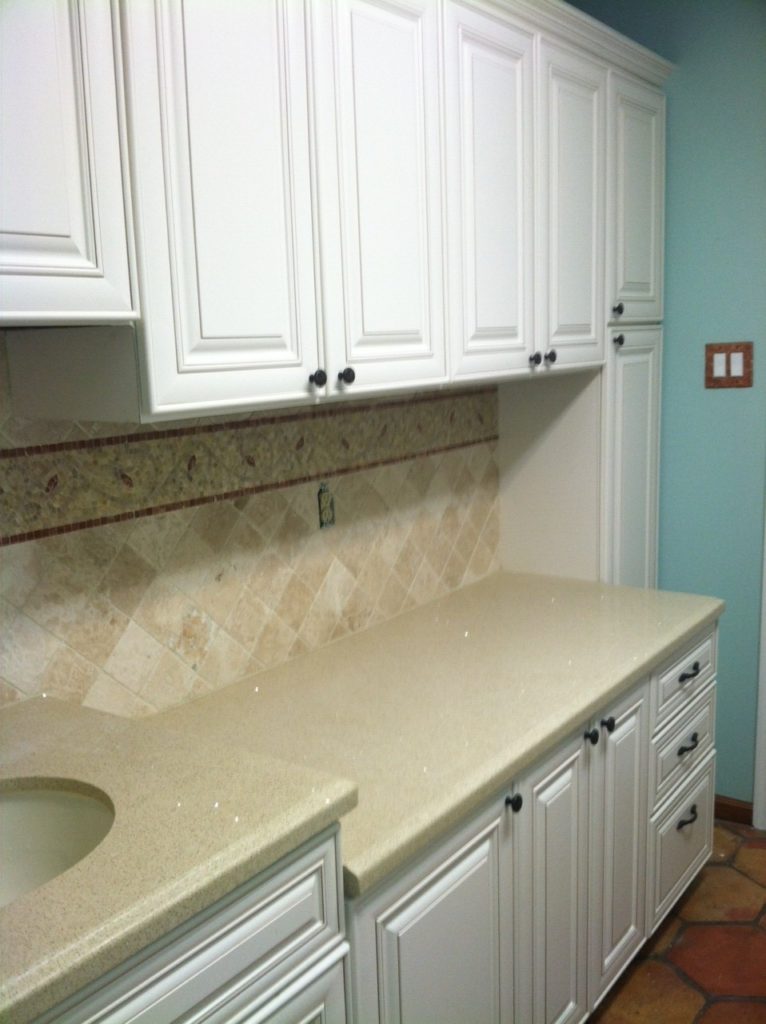 3) DRAWERS MUST BE DOVETAILED!Dovetailed drawers are great, don’t get me wrong, but what you may not know is that a glue dadoed joint will more than do the trick and is as strong as any kitchen drawer needs to be. What you should be looking for is good quality slides. It’s the moving parts that will get all the wear and tear over time. It has pretty much become an industry standard, in all price points, for drawers to be full extension with a soft close feature.
3) DRAWERS MUST BE DOVETAILED!Dovetailed drawers are great, don’t get me wrong, but what you may not know is that a glue dadoed joint will more than do the trick and is as strong as any kitchen drawer needs to be. What you should be looking for is good quality slides. It’s the moving parts that will get all the wear and tear over time. It has pretty much become an industry standard, in all price points, for drawers to be full extension with a soft close feature. 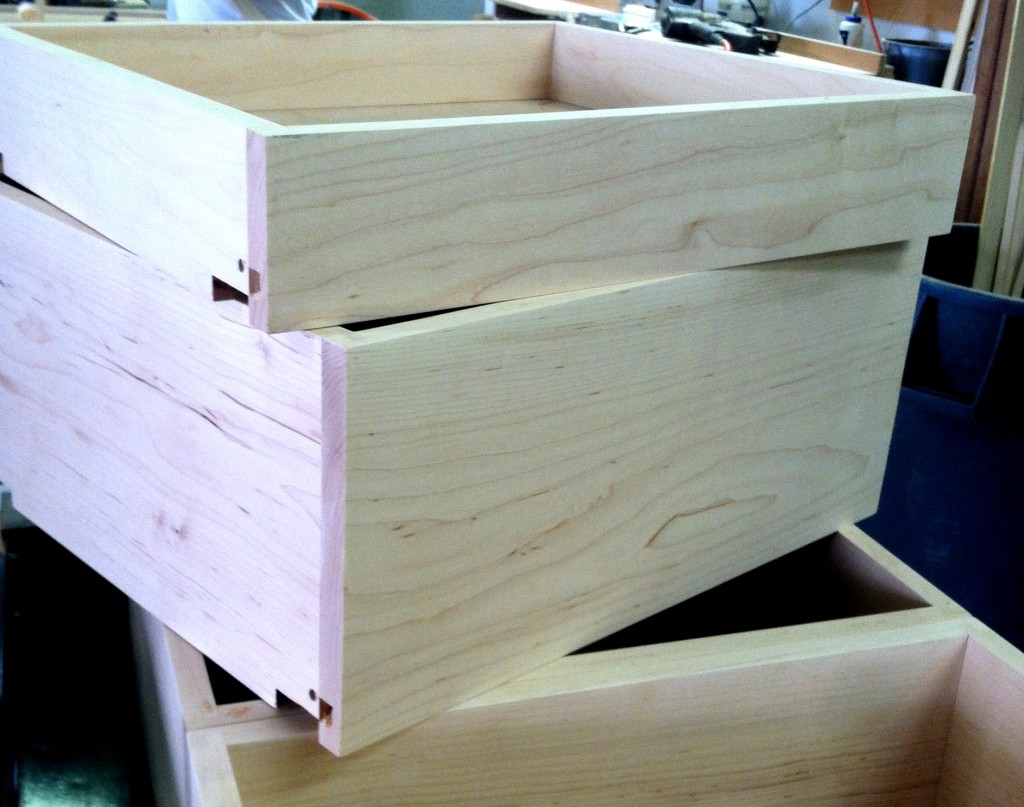
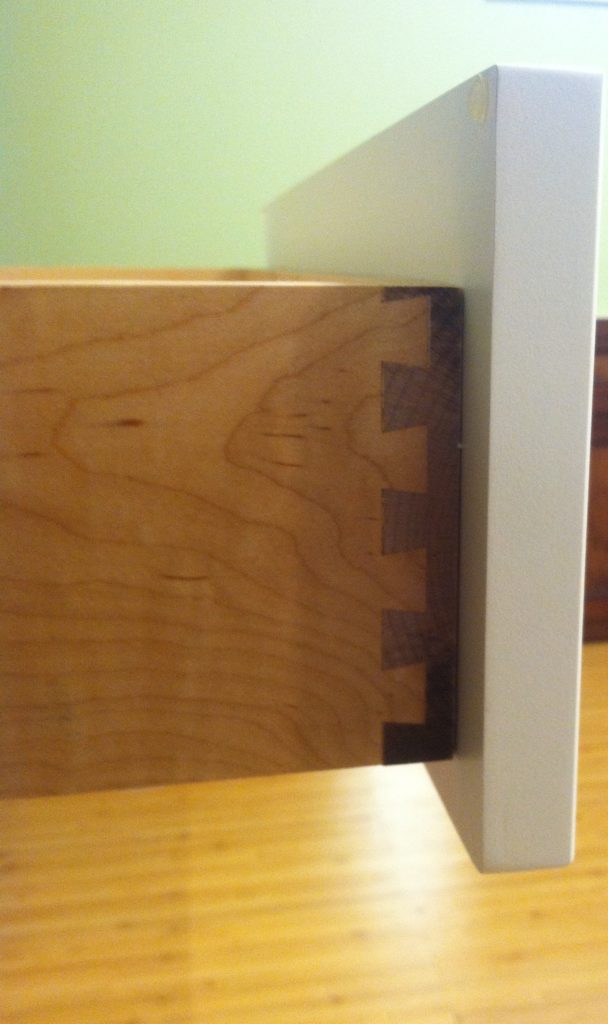 4) SIZE MATTERSWe’re talking cabinet sizes. If you go from a 36” wide cabinet to a 30” you are not going to save more than a few dollars. The way to get the price down is to decrease the number of cabinet boxes. You may think you have a small kitchen but if you have 20 boxes when you could have 12 larger boxes instead you’ll be spending a lot more. In this case perhaps 50%. Bear in mind that the price of installation is usually based on the amount of cabinet boxes. Last but not least, drawers and rollouts will up your price so plan wisely.
4) SIZE MATTERSWe’re talking cabinet sizes. If you go from a 36” wide cabinet to a 30” you are not going to save more than a few dollars. The way to get the price down is to decrease the number of cabinet boxes. You may think you have a small kitchen but if you have 20 boxes when you could have 12 larger boxes instead you’ll be spending a lot more. In this case perhaps 50%. Bear in mind that the price of installation is usually based on the amount of cabinet boxes. Last but not least, drawers and rollouts will up your price so plan wisely. 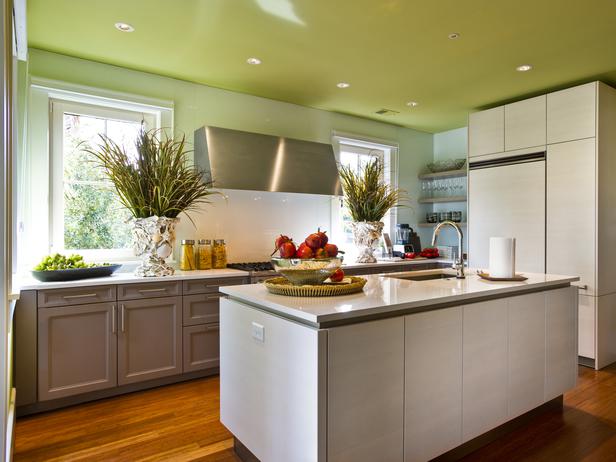 5) HGTV IS A GOOD BASIS FOR CALCULATING MY BUDGETWRONG! I love HGTV as much as the next person but they are so off in their pricing. Having worked with This Old House, I do know that suppliers extend deep discounts when their products are being shown on TV. Another thing to remember is that pricing can vary for certain items in different parts of the country and a lot of the shows we see on HGTV are filmed in Canada. Granite is typically cheaper for us in Florida than say Michigan because we are so close to the port of entry we save on shipping costs. So watch for inspiration not cost calculation!Ok, pros, weigh in. What myths do you encounter and do you agree with these?
5) HGTV IS A GOOD BASIS FOR CALCULATING MY BUDGETWRONG! I love HGTV as much as the next person but they are so off in their pricing. Having worked with This Old House, I do know that suppliers extend deep discounts when their products are being shown on TV. Another thing to remember is that pricing can vary for certain items in different parts of the country and a lot of the shows we see on HGTV are filmed in Canada. Granite is typically cheaper for us in Florida than say Michigan because we are so close to the port of entry we save on shipping costs. So watch for inspiration not cost calculation!Ok, pros, weigh in. What myths do you encounter and do you agree with these?

